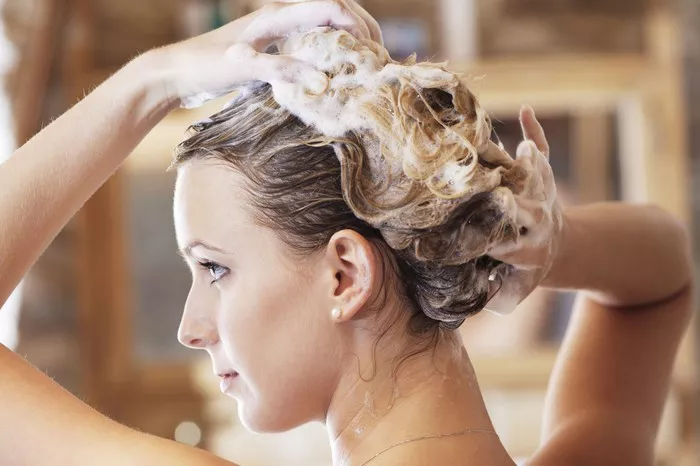The way our hair looks can significantly impact our self-perception, turning a day from good to bad or vice versa. While styling often takes the spotlight, experts unanimously agree that achieving perfect locks begins with the washing routine.
Recently, a TikTok user with a passion for “haircare, fashion, and whatever else inspires me” shared her experience with the unconventional trend of “showering in reverse.” Advocates of this method claim it safeguards the hair’s mid-lengths and ends from shampoo, ultimately preserving hydration.
In the pursuit of healthy hair, individuals invest considerable amounts, with the average American woman spending $877 annually on grooming, as per a 2020 survey by Advanced Dermatology. While skincare and makeup contribute to this spending, hair products and haircuts take precedence.
The “reverse hair washing” technique involves conditioning the hair first, serving as a protective barrier for the drier mid-lengths and ends during the subsequent shampooing. Whitney White, cofounder of Melanin Haircare, explained that as the oldest sections of the hair strand, the ends and mid-sections are more prone to dryness and damage, making additional moisture and protection beneficial.
Despite claims of achieving “silky soft and shiny” results, caution is advised against frequent use to prevent product buildup, as noted by the TikTok user.
So, What Is Reverse Hair Washing?
This straightforward technique involves reversing the order of shampoo and conditioner application. Conditioning first aims to create a buffer for the dryer parts of the hair against the shampoo.
Expert Insights on Efficacy
Opinions on the effectiveness of reverse hair washing vary. Some users in the comments express concerns about the potential wastage of products, while others, including celebrity hairstylist Cody Renegar, argue that the method can work without wasting products. Renegar explains that conditioning first allows the nutrients to penetrate the hair strands, while shampooing rinses off excess residue.
Whitney White supports this perspective, emphasizing that the absorption of conditioner into the cuticle provides benefits based on hair type and needs.
Introducing Pre-Pooing
White notes that reverse washing isn’t an entirely new concept, as it resembles a practice known as “pre-pooing” within the textured natural hair community. Pre-pooing involves applying conditioner or beneficial oil before washing to re-moisturize and condition the hair, preparing it for cleansing.
The Main Difference
While both processes offer advantages, the key distinction lies in the post-conditioning steps. With pre-pooing, the hair undergoes an additional round of conditioning after shampooing, whereas reverse washing completes the process with a single application of conditioner.
The Importance of Hair Washing in Styling
The United States boasts the world’s most lucrative hair care market, generating around $15 billion in 2017, according to Statista. Despite this, much of the online discourse focuses on post-wash care.
Celebrity hairstylist Renegar emphasizes the critical role of the hair-washing process in achieving a desirable hairstyle, stating that it determines the difference between vibrant, manageable hair and lackluster, dull strands.
Experts recommend washing hair every two to three days, underscoring its significance in achieving successful styling outcomes. White warns against skipping shampoo entirely, as it can lead to dull color, reduced movement, shine, volume, and interference with heat styling responses. This revelation contradicts the popular curly girl method, which advocates for cleansing with conditioner only, known as co-washing.


